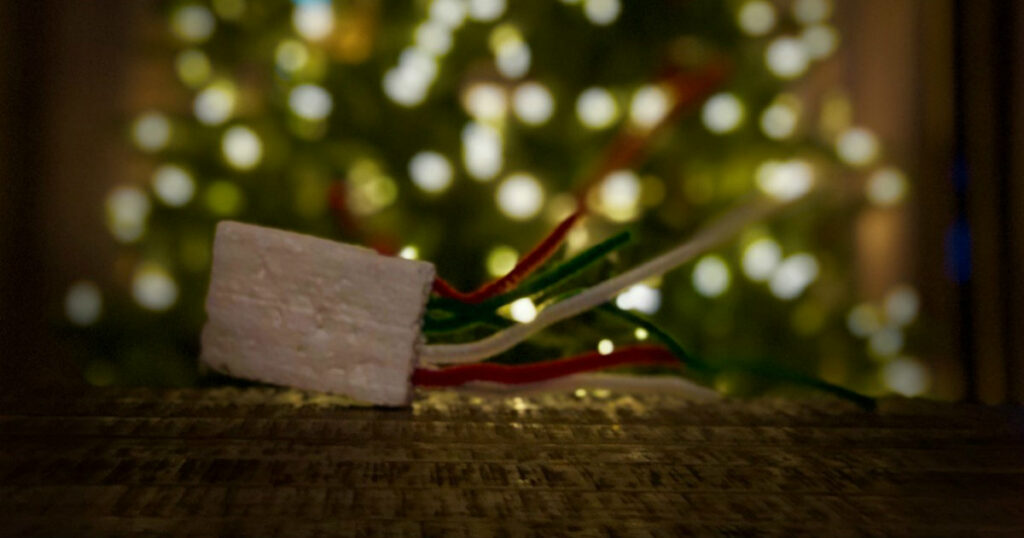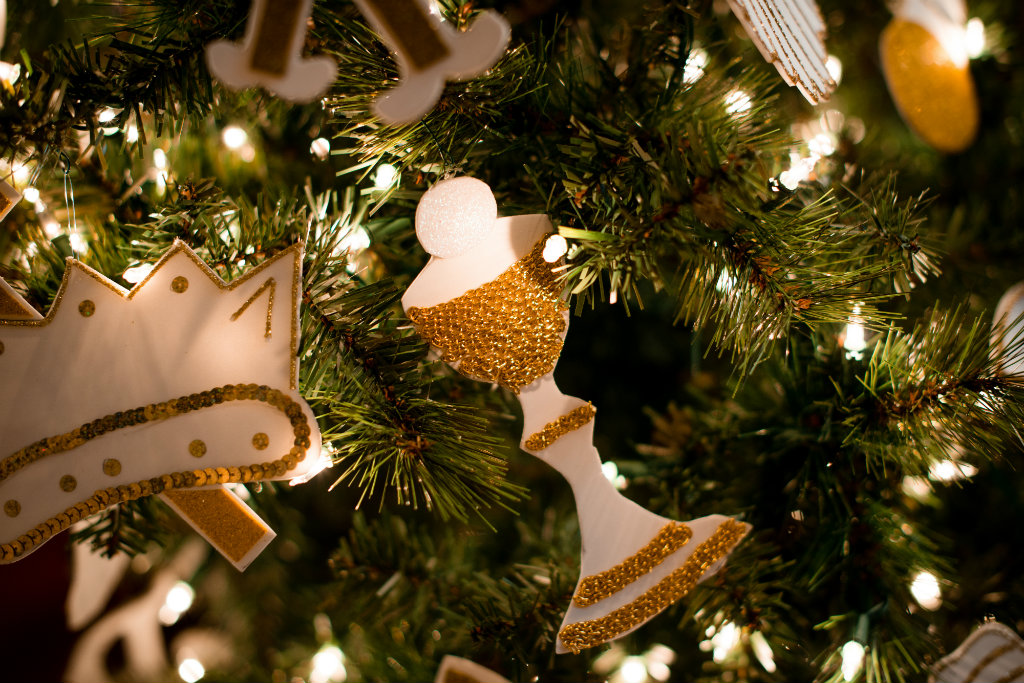by Tim Pauls
Nearly every family has Christmas tree rituals, and we are not immune. While some hardy souls begin with a day of snow-shoeing to find the perfect fir, we start the festivities each year by removing our battered tree from its box and bending the branches back into something vaguely realistic looking. Once the limbs have been straightened and the lights reconnected, we open boxes of ornaments to decorate the tree.
Of all the ornaments in the Pauls household, none is quite so known or recognizable as the Christmas squid.
The Christmas squid has been with us for nearly twenty years now. Its body is a rectangle of Styrofoam. Out of one end, a toothpick protrudes; out of the other spring several red and green pipe cleaners. Even accounting for two decades of inflation, the materials used to make it would probably still run about 8 cents. It looks quite unlike anything known to man, and it must be laid carefully on the branches because there’s simply no way to hang it.
When we were first presented with this festive sculpture at the end of a preschool day, I must confess that we were speechless. I asked the artist what, exactly, he had created. He responded, matter-of-factly, “It’s a Christmas squid.”
And so it is. A Christmas squid.
The Christmas squid has occupied a special place on the tree every year since it arrived. As part of our family tree trimming ritual, I clear my throat and casually repeat, with as much sincerity as I can muster, the same words I first said those many years ago: “Let’s put the Christmas squid on the back side of the tree by the windows, so that the neighbors can see it too.” On cue, the family nods solemnly and approvingly, and so we do: the Christmas squid rests on the branches about two thirds of the way up the tree by the corner window. That way, any casual passerby (who has climbed the fence into our backyard and not yet been savaged by our dogs) might glance through the window on his way by and appreciate the ornament for all of its, um, festive squidness.
The Christmas squid is my favorite, but we have several other handmade treasures that belong to this same genre. There’s the clothespin painted like a pastor, with enviably thick hair made from a black yarn puff. There’s the angel made of cloth with a wooden ball for a face, on which a small hand drew two eyes just lopsided enough to cause the word “exorcist” to flash unbidden though one’s mind. There’s the tan baptismal shell that looks like an arrowhead, unless it’s a tan arrowhead that looks like a baptismal shell. These misfit ornaments are precious, placed high upon the tree, far out of reach of gnawing puppies. They’re family heirlooms to be preserved.
We have many other decorations — footballs and arks and bells and mangers, some pretty and shiny, some gifted, some store-bought. It all makes for a diversified mix; there’s no discernible theme to the Pauls tree. If many of these disappeared, we’d forget them by the next year.
But we would not forget the Christmas squid, nor its eclectic kin.
You know why. These treasures were made by small, flesh-and-blood hands that we’ve been watching since they first curled into tiny pink fists on the day they were born, and they were made as gifts for us. Not for you, but for us. The Christmas squid is ours alone.
This is for you, though, and I share it gladly: God the Father formed His eternal, only-begotten Son in the womb of a virgin named Mary; and Christmas is nothing less than the celebration that Mary gave birth to her creator — and your Savior. He is a gift and an offering: indeed, He was given to be a sacrifice, to die in your place for your sins so that you might be gathered into the family of God.
Whether it be through Christmas tree ornaments or family gatherings, God grant that all of your celebrations may remind you of this gift for your salvation: “Unto you is born this day in the city of David a Savior, who is Christ the Lord” (Luke 2:11, emphasis mine).
The Rev. Tim Pauls is the pastor of Good Shepherd Lutheran Church in Boise, Idaho, and a Collegium Fellow for DOXOLOGY: The Lutheran Center for Spiritual Care and Counsel.






